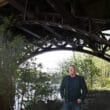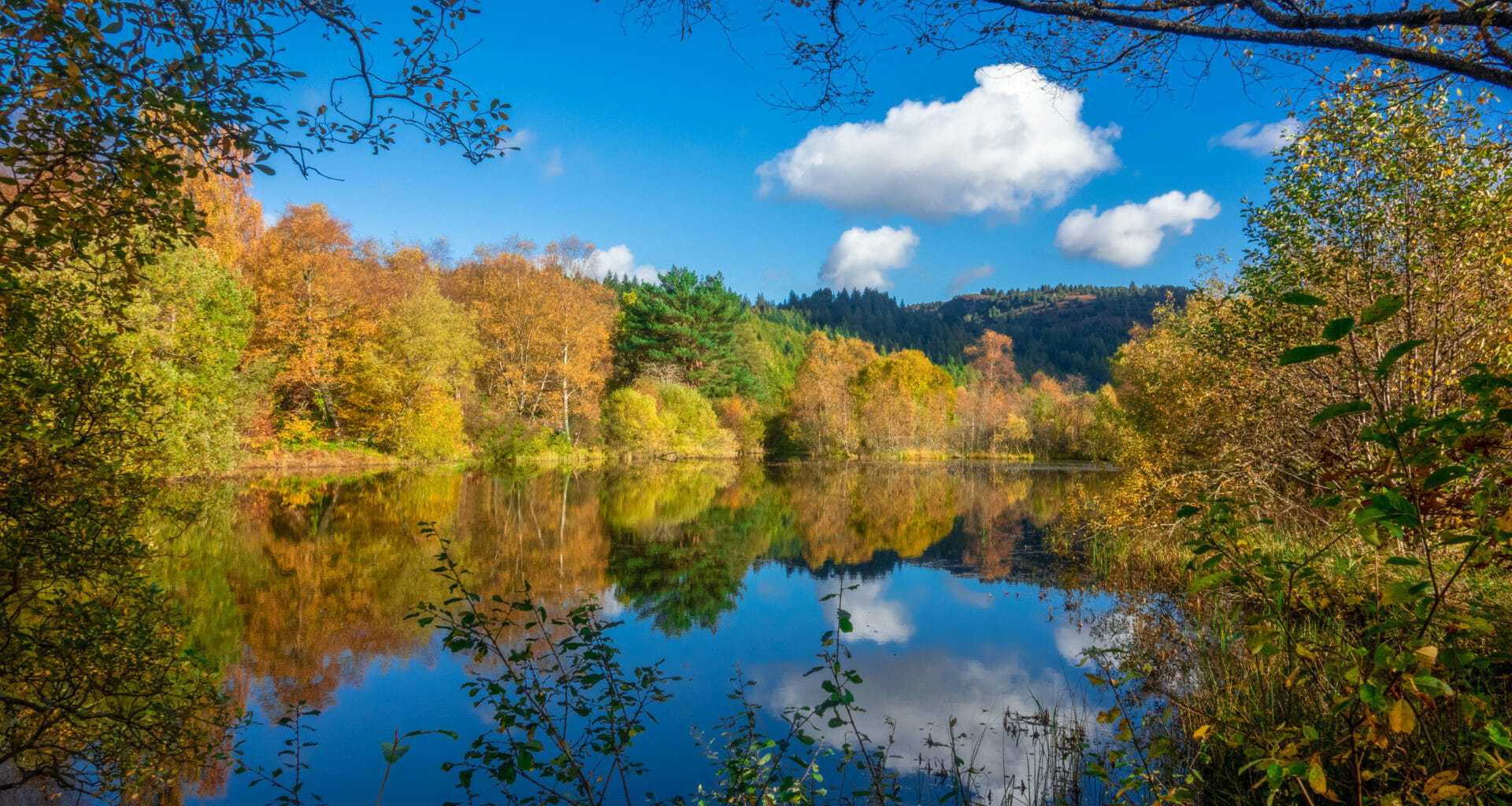The Scottish Government’s wildlife agency, NatureScot, withdrew an objection to a tourist development in a native woodland after senior managers felt “serious heat” from its chair.
An intervention by chair, Mike Cantlay, led to the rejection of scientific advice from NatureScot staff that the protected woodland would be damaged, according to internal documents obtained by The Ferret.
This paved the way for the development — a footpath and watchtower in The Trossachs by Loch Katrine — to be given the go-ahead.
The former Green MSP, Andy Wightman, called for an investigation and for Cantlay to “consider his position” if he was found to have acted inappropriately. The Scottish Greens, whose current MSP, Lorna Slater, is the minister responsible for NatureScot, warned that “serious questions” have to be asked about Cantlay’s intervention.
In 2018 Cantlay was described as a “strong supporter” of the developer, the Steamship Sir Walter Scott. He is also a former convener of Loch Lomond and The Trossachs National Park Authority and former chair of the Scottish Government’s tourism agency, VisitScotland.
NatureScot confirmed that Cantlay intervened, but argued he was “quite correctly” highlighting concerns from local people and organisations. The initial objection was withdrawn after the impact of the development was “more comprehensively assessed”, the agency said.
The developer stressed that the path and watchtower had “unprecedented” local support and had “captured the public imagination”. The damage caused by giving access to a site of “great cultural significance” would be “minimal”, it argued.

Steamship Sir Walter Scott Trust is a tourist business which runs boats trips on Loch Katrine, along with a cafe, gift shop and self-catering accommodation. In October 2020 it applied to the Loch Lomond park authority for planning permission to build a 188-metre path from Trossachs pier to a watchtower and two linked lookout platforms.
The trust named the watchtower after Roderick Dhu, a character in Walter Scott’s 1810 narrative poem, The Lady of the Lake. There had been a well-trodden path there in the 19th century which had fallen into disuse in recent decades, it said.
The development was proposed in the Trossachs Woods Special Area of Conservation (SAC), which is under legal protection because it’s an endangered oak woodland. This meant that the environmental impact had to be assessed by the park authority and NatureScot.
More than 400 pages of correspondence and reports released under freedom of information law by NatureScot show what then happened. NatureScot officials visited the site and, in consultation with park officials, decided that the development would damage the SAC.
In February 2021 NatureScot lodged a formal objection to the proposal. It agreed with the park authority that “it cannot be shown that there will be no adverse effect on the integrity” of the area.
This prompted a strong response from the steamship trust, disputing NatureScot’s findings. The wildlife agency’s initial replies sought to justify and maintain its objection.
There is some serious heat building with this one, with the chairman getting involved and likelihood that it could hit the press.
Graham Boyle, NatureScot
But this soon started to change. On 10 March NatureScot chief of staff, Graham Boyle, emailed his officials asking “how we could work with the project to agree a package of mitigation measures which would address our concerns.”
The next day he added: “There is some serious heat building with this one, with the chairman getting involved and likelihood that it could hit the press. If not already done so I think an urgent meeting with the applicant and other parties (virtually or otherwise) to discuss mitigation measures is needed.”
NatureScot then began a process, which resulted in the withdrawal of its objection in July. This time it concluded that “there will be no adverse effect on the integrity” of the SAC.
The released emails released show that officials from both the park authority and NatureScot expressed concerns about the turnaround. “We are compromising ourselves in this and other cases, by providing considered advice and then changing our minds without clear cause,” wrote one NatureScot official on 5 May 2021.
The official was then told by his manager that he had “dealt with the case correctly” but that the case was “complicated…in terms of relationships.” The names of both have been redacted.
Officials at the Loch Lomond park authority disputed NatureScot’s new position and maintained their view that the development would be damaging. They recommended to the park’s planning committee that it be rejected at a meeting on 30 August.
But after a personal appeal from the steamship trust and a local community representative, the committee voted by five to three to overturn their officials’ advice, and to give the development the green light.
The successful motion highlighted NatureScot’s revised position. The park authority had also received 137 representations from local people and groups backing the development.
Serious questions have to be asked about Mike Cantlay’s intervention here and what motivated it.
Spokesperson, Scottish Greens
Cantlay was convener of the Loch Lomond park authority from 2006 to 2011, and chaired VisitScotland from 2010 to 2016. He became chair of NatureScot in 2017, and was appointed for a further two years in May 2020.
He also chairs the Scottish Funding Council, which invests £1.8 billion in colleges, and used to chair Highlands and Islands Airports. At the same time he has been chief executive of an international tourism and retail business, William Glen, since 1993.
Mike Cantlay was described in a camping magazine in 2018 as a “strong supporter” of Steamship Sir Walter Scott “over the years” when he opened its “eco-camp” by Loch Katrine. In 2010, when he chaired VisitScotland, he praised the steamship as a “successful tourist development”.
In July 2021 The Ferret named Cantlay of one of Scotland’s ten most powerful people in our major investigation into Who Runs Scotland.
The Scottish Greens joined the Scottish Government in August, when the Green MSP, Lorna Slater, was appointed as biodiversity minister overseeing NatureScot. “Serious questions have to be asked about Mike Cantlay’s intervention here and what motivated it,” said a party spokesperson.
“The Scottish Greens are determined that our national parks are afforded better protection from commercial developers to protect their natural beauty and biodiversity. The new national planning framework reflects this and it would be very worrying if individuals at NatureScot haven’t recognised this change of direction yet.”
Former Green MSP and land reform campaigner, Andy Wightman, pointed out the planning process required NatureScot to provide impartial and scientific views on planning applications. “NatureScot’s own guidance on such matters makes clear that such decisions are delegated to staff members to take based on objective criteria,” he said.
“To ensure the integrity of the process, it is inappropriate in my view for the chair or any board member to be involved in the appraisal of any planning application. If the chair’s intervention was critical in shaping the final advice, then he was acting outwith his powers.”
Wightman added: “It is important that an investigation is undertaken to establish what happened, why the advice was framed as it was, and whether the chair acted appropriately. If it is found that he did not, then he should consider his position.”
The campaign group, Woodland Trust Scotland, argued that NatureScot’s decisions should be driven by scientific evidence. “The u-turn on this planning proposal can only be justified if it was based on new data and so we call on NatureScot to lay out the rationale for this change of mind,” said the group’s spokesperson.
Concerns were raised by a range of people and organisations from the local community with the chair regarding the application. The chair quite correctly highlighted those concerns to colleagues in NatureScot.
Spokesperson, NatureScot
NatureScot responded on behalf of Cantlay, defending his intervention. “Concerns were raised by a range of people and organisations from the local community with the chair regarding the application,” said a spokesperson for the agency.
“The chair quite correctly highlighted those concerns to colleagues in NatureScot. The final decision we took was made over time as we gathered more evidence.”
NatureScot pointed out that Covid-19 restrictions had prevented a site visit with the developer and park planners before its initial response to the application. “After restrictions eased, we visited the site and more comprehensively assessed the nature and scale of the potential impacts on the special area of conservation,” the spokesperson added.
“The organisations involved explained the way the work to build the path and viewing tower are planned to minimise disturbance. We concluded there will be no adverse effects on the SAC’s special species and habitats. This is consistent with our advice on a number of other similar proposals for small scale development with European sites.”
James Fraser, the chief executive of Steamship Sir Walter Scott, highlighted the “great cultural significance” of the Roderick Dhu path and its “unprecedented” level of local support. It had “captured the public imagination”, he said.
“We were keen to provide visitors with an opportunity to reconnect with nature in safe and responsible ways and to enjoy the views that were so admired. We consider this is entirely consistent with the aims of the national park.”
Fraser thought it was “unfair” for the park planners to say it was a new development when it was reinstating an existing path. The site visit after Covid-19 lockdown restrictions eased “helped clarify how minimal the impact of the path reinstatement would be,” he added, with a “very small” footprint compared to overall size of the SAC.
The Loch Lomond and The Trossachs National Park Authority confirmed that the development had been given the go-ahead after “an in-depth and extended discussion”.
A Scottish Government spokesperson said: “Planning decisions are operational matters for relevant planning authorities and are taken in line with established procedures.”
The documents released by NatureScot
Cover image thanks to iStock/yvonnestewarthenderson.















SNH has a duty to consider the needs of other interests when making decisions. This requirement does not apply to their advice on European sites, which can only be based on scientific evidence. if they have changed their mind based on concerns raised by others, such as local communities, and those concerns don’t relate to the scientific evidence, then they have erred in the application of the legislation.